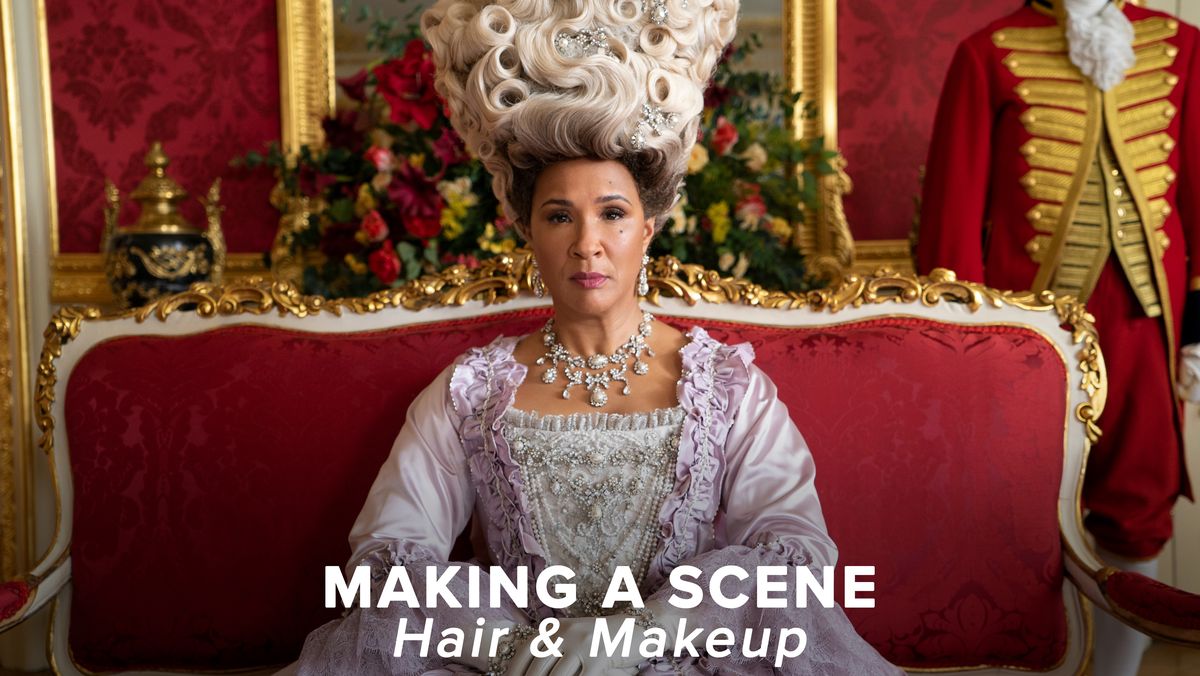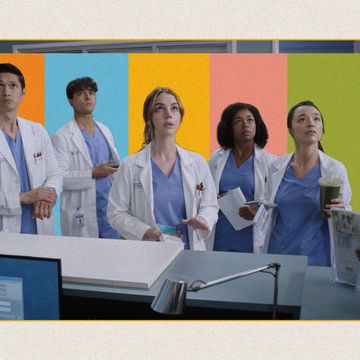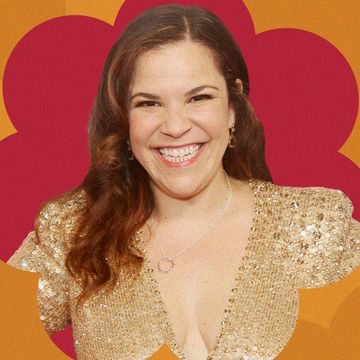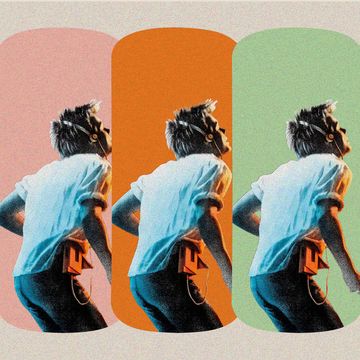The first rule of costuming for the screen is to never let the clothes speak louder than the dialogue. But when that dialogue is spoken by Fran Drescher, the star of ’90s sitcom The Nanny, who used a now-iconic Queens, New York, accent to play the lead character, the clothes need to scream.
Enter the lady in red when everybody else is wearing tan: Fran Fine.
“Fran was sassy, spirited, outspoken, but always an underpinning of elegance, pushed right to the edge of tipping it to the edge of something not good!” says The Nanny costume designer and frequent Drescher collaborator Brenda Cooper. “I didn’t really know I was doing [it, but Drescher said] that I had the ability to elevate the comedy with style. You’re building a character. If you’re doing your job right, I wanted the audience to smile the moment they saw her, before she delivered her first line.”
Cooper certainly did her job right, with the fashion of The Nanny experiencing a resurgence in recent years after many people rediscovered the show on streaming platforms during the Covid lockdown. The fashion has become perhaps the most recognizable and iconic aspect of the show. After all, the only Emmy The Nanny won during its six-season run was for Cooper’s costuming, which is celebrated in her retrospective exhibition currently on display at Santa Monica College (the statuette for which she pulls out during her interview with Shondaland).
“I didn’t want the show to have a time stamp,” Cooper says. “I wanted to create a look that 30 years into the future, the look of that show would be as popular today as it was back then.”
My own recent rewatch confirms that not only are 95 percent of Fran’s outfits objectively wearable today, but also that her bright colors, daring patterns, and form-fitting outfits certainly influenced this writer’s style (meaning that I could pull from my own wardrobe to go as Fran Fine for Halloween this year).
“Clothes can do one of three things: They can either dominate you because the clothes are too bright or an [ill-suited] style, they can drain you and make you look tired and ill, or clothes can illuminate you. My equation is always the last one,” says Cooper, who brought her formula to the masses in her book The Silhouette Solution. “Fran and I were a match made in style heaven — she loved fashion, and I loved fashion.”
This style ethos is easy to see on Drescher, who was dressed in a base uniform of a black turtleneck, black skirt, black suede stiletto heels, and black opaque pantyhose — “so it didn’t look slutty!” Cooper exclaims — during the early days of the show when there wasn’t a large budget for a wardrobe.
There is a lot of outfit-repeating in early seasons; Cooper says she would swap out vests and jackets, like a striped Moschino vest or Dolce & Gabbana mirrored jacket. Designer Todd Oldham, who actually makes an appearance on the show, comes up a lot during our conversation, and his bold looks helped to define it. “[A] multicolored [Todd Oldham suit] with circles all over it. There’s another Todd Oldham suit that’s brown and crocodile print,” Cooper lists as some of her favorites, along with a Vivienne Westwood black velvet corset with a vibrant floral blouse and a yellow skirt. “That’s an example of pulling all these different elements together and putting it into an outfit, which is what I love to do,” Cooper says, in addition to raiding Bob Mackie’s showroom for Fran’s evening looks, with a few of Cooper’s seamstresses previously working with the legendary costumer.
“People say on Instagram, ‘How could she afford this?!’” Cooper laughs. (I couldn’t help but wonder, have they ever heard of Carrie Bradshaw?)
The Nanny’s enviable style doesn’t extend to just the titular live-in au pair — there were several other women on the show (Cooper farmed the costuming of the men out to her assistants) with distinct looks. Cooper gravitated toward cool colors for the ice-blonde eldest daughter Maggie (Nicholle Tom), while a line of English party dresses Cooper spied while shopping at a department store inspired Grace’s (Madeline Zima) look. “There’s loud, and then there’s loud with style,” Cooper says of underappreciated fashion icon Grandma Yetta’s (Ann Morgan Guilbert) athleisure. The show liked to jest about how Fran was destined to end up like her over-the-top mother, Sylvia (Renée Taylor), and that was how Cooper approached her costuming, which is plain to see in her favoring of bright colors, loud patterns, and leopard print as a neutral.
“I would do the older version of Fran for Renée,” Cooper says after relaying a story about Taylor rebuffing her after Cooper tried to put the curvy star in a pre-Spanx girdle. “But it defined the character because it sucked her in, it made her walk a certain way, talk in a certain way, and gave her confidence.” C.C.’s (Lauren Lane) shoulder pads could take an eye out, but her oversize blazers are a similarly timeless look from The Nanny that isn’t out of place on the runway today. The blazers were inspired by Cooper’s collection of 1940s blazers.
So, what is it about the ’90s — whether that be grunge, babydoll dresses, streetwear, denim, or bodycon — that endures today, especially when compared to the monstrous maximalism of the ’80s or the triggering flared jeans dragging in the mud, layered tops, and fabric belts of the Y2K renaissance that bookend that decade? Cooper doesn’t actually see much of a difference in the fashion trends of the last 30 years, at least when contrasted with the more easily defined previous eras, such as the 1920s flapper, 1950s New Look, or ’70s disco. “It would just be less clothes, because people are practically naked today,” she says, which emphasizes Fran’s drastically different style, not just in terms of how much of her body was covered but also the emphasis on high-quality garments that endure over time.
There’s a reason social media accounts like What Fran Wore on Instagram and TV fashion publications are documenting Fran Fine’s outfits and providing links to eBay, theRealReal, and vintage stores for similar styles, or, in lucky instances, the exact garments. “I can completely understand when young people are going to the past and emulating their favorite TV shows,” Cooper says. Based on Fran Fine’s style popularity, Cooper did create a fashion prototype that people can look back on 30 years later.
Scarlett Harris is a culture critic and author of A Diva Was a Female Version of a Wrestler: An Abbreviated Herstory of World Wrestling Entertainment. You can follow her on Twitter @ScarlettEHarris.
Get Shondaland directly in your inbox: SUBSCRIBE TODAY














